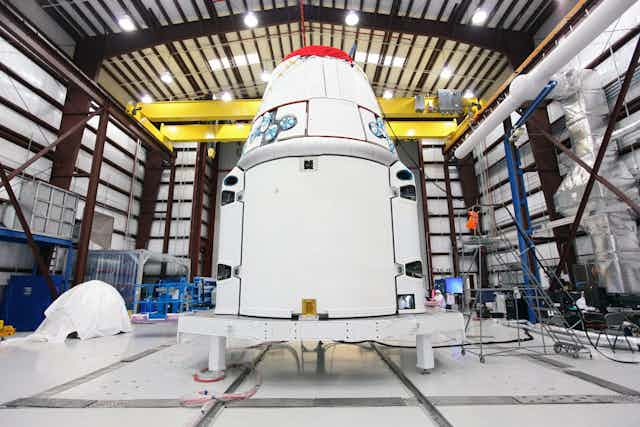American multi-millionaire and “space tourist” Dennis Tito plans to help fund a trip to Mars for two intrepid astronauts – as you may have read about on The Conversation. But they won’t be stopping – just passing by within 100km of the surface.
This trip is being led by Tito’s non-profit organisation – Inspiration Mars Foundation - and its stated aim is to:
inspire Americans to take advantage of this unique window of opportunity to push the envelope of human experience, while reaching out to our youth to expand their views of their own futures in space exploration.
What is most interesting, however, is the “do-it-yourself” way the whole space mission is being planned.
The proposed details of the mission are described in a technical paper now available online.

The plan is to go Mars on what is called a “free-return trajectory”, whereby the gravity of a secondary planet will cause the spacecraft to return to the primary body (Earth) without propulsion.
For that reason, the dates are already locked in: the mission must depart Earth on January 5, 2018, will pass-by Mars on August 20, 2018, and then return to Earth on May 21, 2019.
This is a very short trip which can only be done at a precise time in the celestial calendar, which recurs every five years or so.
The duration of around 501 days, or 16 months, is years shorter than any mission that would stop in orbit or land on Mars (once you slow down to orbit Mars you must wait for the next time Earth passes Mars in order to return). It is therefore a simple first step towards human exploration of Mars.
The plan is for mission costs - projected to be between US$1-2 billion - to be contained by using existing technology.
For those interested, a great infographic on the mission was published on Space.com recently, and can be seen here.
SpaceX
Space Exploration Technologies Corporation, or SpaceX, is US-based private space transport company founded in 2002 by PayPal co-founder Elon Musk.
The company is expected to be involved in Tito’s Mars mission, with plans afoot for the use of three of SpaceX’s Falcon 9 rockets, the most powerful in the world, to launch Tito’s Dragon spacecraft.
The capsule is to be an upgraded SpaceX Dragon capsule, which is really quite a cramped quarters for such a trip. Think floating around in a small camper-van.

Many of the usual things taken by astronauts on such a trip, such as spacesuits, will be left behind.
This will limit the ability of the two astronauts to perform in-flight repairs.
Checks and balances
Many questions are being asked about why a private foundation is planning a human trip to Mars, but NASA cannot afford it. The answer lies in a difference of philosophies.
When NASA does space exploration, it is done the NASA way. In layman’s terms, think “gold-plated”.
On a NASA mission, all the equipment taken along goes through extensive and rigorous testing. The rockets are the best money can buy.
There are a multitude of checks and balances in place to try to make the mission as safe as humanly possible. NASA learned this method through the Apollo and Space Shuttle programs, and still has an extensive infrastructure in place to support it.
In some ways, people expect this of NASA. It may be, however, that space technology has matured to the point where this approach is not needed.

The successful SpaceX flights to re-supply the International Space Station have shown that a commercial company can safely fly to low earth orbit – and for a much lower price than NASA could.
Granted, SpaceX relies heavily on NASA for technical support during the flights. But SpaceX is responsible for the overall mission.
The Inspiration Mars Foundation mission can be viewed as an extension of this “non-government” spaceflight idea to human exploration of the solar system.
Whether the time is right for this will become clear in 2018.
Further reading:
Pensioners to go to Mars – why the old ones are the best

